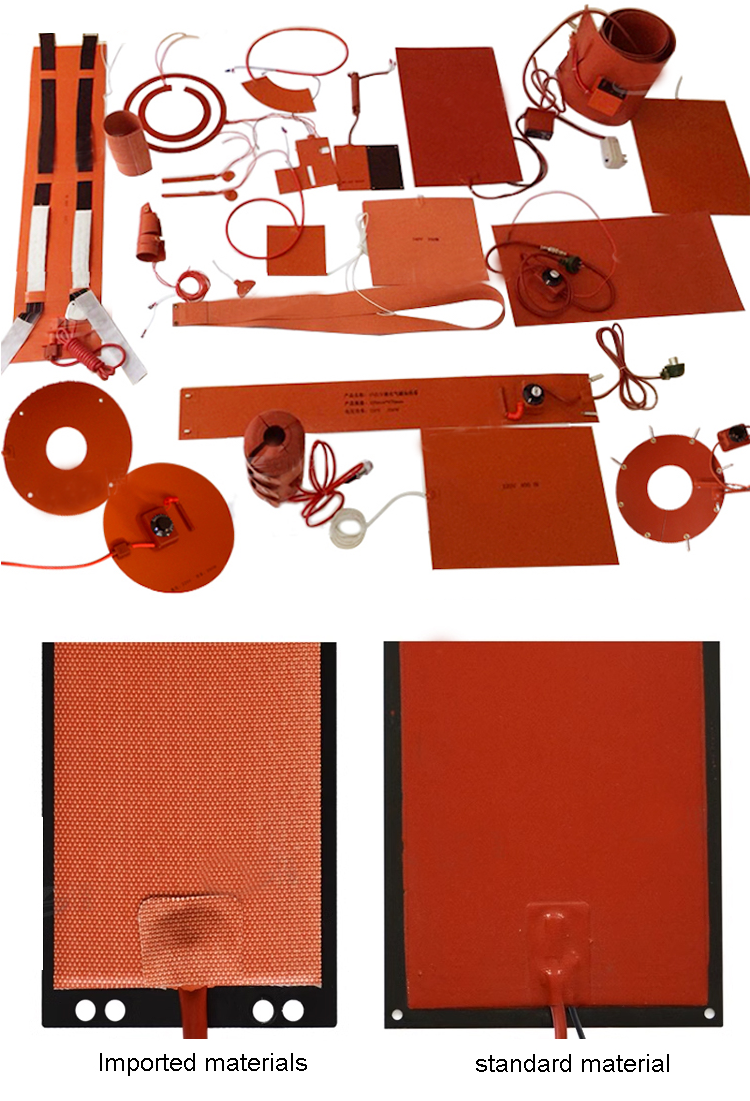- Product Details
- {{item.text}}
Quick Details
-
Place of Origin:
-
Jiangsu, China
-
Brand Name:
-
BEST
-
Dimension(L*W*H):
-
as your requests
-
Weight:
-
1 KG
-
Working Temperature Range:
-
-40 - 200 ℃
-
Core Components:
-
heating wire
-
After-sales Service Provided:
-
Overseas third-party support available
-
Thickness:
-
1.5mm-3mm
-
Size Deviation:
-
±0.5%
-
Insulation Resistance:
-
≥5 MΩ
-
Power Deviation:
-
±5%
-
Wire Type:
-
flexible silicon heater
-
key word:
-
silicone heater pad
-
Product name:
-
110 v Industrial flexible silicone rubber heater heating pad
Quick Details
-
Type:
-
Band Heater
-
Power Source:
-
Electric
-
Voltage:
-
3.7v-660v
-
Place of Origin:
-
Jiangsu, China
-
Brand Name:
-
BEST
-
Dimension(L*W*H):
-
as your requests
-
Weight:
-
1 KG
-
Working Temperature Range:
-
-40 - 200 ℃
-
Core Components:
-
heating wire
-
After-sales Service Provided:
-
Overseas third-party support available
-
Thickness:
-
1.5mm-3mm
-
Size Deviation:
-
±0.5%
-
Insulation Resistance:
-
≥5 MΩ
-
Power Deviation:
-
±5%
-
Wire Type:
-
flexible silicon heater
-
key word:
-
silicone heater pad
-
Product name:
-
110 v Industrial flexible silicone rubber heater heating pad
customized 110 v Industrial flexible silicone rubber heater heating pad with thermostat
| Temperature range | -40.00~200.00°C |
| Electric resistance precision | ±10%( bigger value selected) |
| Power density | 0.01~2w/cm² |
| Mechanical pressure | 100.00kg/cm² |
| Minimum bending radius | 3.20mm |
| External insulation material | Silicone glass fiber |
| Internal heating element | Ni-Cr alloy |
| Thickness | 1.5mm-3mm(With 3M) |
| Voltage | 5V 12V 24V 36V 48V 110V 220V 380V or custom |




Product Advantage
1.3M gum
2. The shape can be customized
3. Heating in the air, the highest temperature is 180℃
4. USB interface, 3.7V battery, thermocouple wire and thermistor can be added
(PT100 NTC 10K 100K 3950%)
Construction: Silicone heaters are made by sandwiching a resistive heating element (usually a nickel-chromium wire or etched foil) between layers of silicone rubber. The silicone rubber serves as both the insulating material and the outer protective layer.
Resistance Heating: When an electric current is applied to the resistive heating element within the silicone heater, it generates heat due to resistance. The resistance of the heating element causes it to heat up, transferring thermal energy to the surrounding silicone rubber.
Uniform Heat Distribution: Silicone rubber has excellent thermal conductivity properties, allowing the heat generated by the heating element to distribute evenly across the surface of the heater. This ensures uniform heating of the target object or surface.
Flexibility: One of the key advantages of silicone heaters is their flexibility. They can be manufactured in various shapes, sizes, and thicknesses to conform to the contours of complex surfaces or objects. This flexibility makes them suitable for applications where traditional rigid heaters are impractical.
Temperature Control: Temperature control of silicone heaters is typically achieved using a thermostat or temperature controller. These devices monitor the temperature of the heater and regulate the power supplied to maintain the desired temperature level.
Overall, silicone heaters are versatile, efficient, and reliable heating solutions suitable for a wide range of industrial and commercial applications.
silicone heater is a type of flexible heating element constructed using silicone rubber as the base material.
These heaters are commonly used in various applications such as medical devices, food processing
equipment, aerospace, automotive, and electronics













